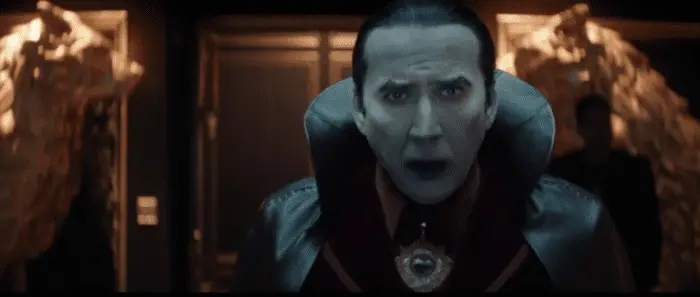With all due respect to Bela Lugosi, whose performance as the eponymous Count in Universal’s Dracula (1931) brought a divine decadence to the horror genre in its formative decade, it’s Dwight Frye who—for this viewer, at least—steals the show as Renfield, Dracula’s familiar. No matter how often I see the film, I always look forward to his manic, wide-eyed grin, his strained laughter that sounds more like sobbing, and how he almost hisses his lines (“Rats, rats, rats! Thousands…millions of them…”). It’s the weird, neurotic intensity of his devotion to Dracula, rather than the presence of Dracula himself, that gives the film’s second half its much-needed charge. Here, the conventions of Hamilton Deane and John L. Balderston’s play confine the action to the stage-like interiors of Dr. Seward’s London sanatorium, where Renfield resides.

Following the success of Dracula, Frye then played Renfield-esque laboratory assistants Fritz and Karl in Universal’s Frankenstein (1931) and The Bride of Frankenstein (1935), respectively.* Frye’s role as the hunchback Fritz is often confused with Lugosi’s role as Ygor in Son of Frankenstein (1939), a blacksmith left with a twisted spine after surviving a hangman’s noose, who becomes the Monster’s sidekick. Look closely and you’ll also spot Frye as a reporter in The Invisible Man (1933), and as villagers in The Ghost of Frankenstein (1942) and Frankenstein Meets the Wolf Man (1943) (according to film historians Tom Weaver, Michael Brunas, and John Brunas, he would have held the distinction of appearing in five consecutive Frankenstein films were his scene in Son of Frankenstein not cut). Frye was a character actor, not a star, but it’s clear that his Renfield persona was important to the studio’s brand identity as the “House of Horrors.”
Universal’s Renfield (2023), directed by Chris McKay and written by Ryan Ridley, is what McKay calls a “quasi-sequel” to the 1931 Dracula. However, it takes a decidedly comic approach to this legacy property. Set in present-day New Orleans, Renfield (Nicholas Hoult) attends group counseling for co-dependents to learn how “to get out of a toxic relationship” with his narcissistic boss Dracula (Nicolas Cage). The film seems to have been designed according to the same model of updating as Universal’s 2020 remake of The Invisible Man, also set in the present, but a straight horror film. The Invisible Man shifted the original’s focus from the mad scientist Griffin to a new character, his ex-girlfriend Cecilia Kass (Elizabeth Moss), whom Griffin “gaslights” with his powers of invisibility. Whereas The Invisible Man took on domestic abuse from a #MeToo-era feminist perspective, Renfield is about the abuse of power in the workplace, deploying the therapy-speak that has entered the parlance of our times to reimagine Renfield in such terms as Dracula’s beleaguered personal assistant, struggling to maintain healthy work/life boundaries.


Last month, Renfield made a global debut of $10 million against a $65 million budget, and has received mixed reviews. What happened? Maybe a more revealing question is, for whom was this film intended? Young Millennials and Gen Zers might be the ideal demographic for a gory, special-effects-driven comedy starring Hoult, but I doubt that a supporting character in a ninety-two-year-old film would be a draw. Conversely, a film centered on Renfield might satiate the appetites of Boomers, Gen Xers, and older Millennials like myself, who grew up watching Universal horror on television and home video. But the film seems to want to acknowledge its origins only to disavow them. For example, old-school horror fans will probably appreciate the prologue that edits Hoult and Cage into footage from the 1931 film, a montage sequence that McKay said made the studio “a little reticent” for its anachronistic use of black-and-white. This same audience, though, is likely to be bored by the buddy-cop-rom-com storyline that interrupts the clever Renfield/Dracula dynamic.
You see, in this version, consuming bugs gives Renfield superhuman fighting abilities, and he befriends a female police officer (Awkwafina) who is trying to take down a local crime family, the Lobos. If Lobo, the Spanish word for “wolf,” is our hint that this family will return in a film derived from The Wolf Man (1941), I can only hope that Universal will abandon that idea after Renfield’s disappointing returns. Perhaps in an attempt to circumvent the stereotype of the Spanish-speaking gangster, the film never suggests that the Lobos are Latinx or Latin American despite still coding them as ethnic Others (Iranian actress Shohreh Aghdashloo plays the powerful matriarch and Jewish American actor Ben Schwartz plays her son, the family’s ineffectual enforcer).
Renfield was not made entirely in bad faith. As McKay told IndieWire, “I wanted it to be a loving homage for fans, but also something that works as world-building for these characters if you don’t know or don’t care about the old movies.” The director even cited Basil Gogos, the cover illustrator of Famous Monsters of Filmland, as an inspiration for the overall look of the film. Cage appears to be having heaps of fun leaning into the bizarre excesses that, for the past thirty years, have confounded critics measuring him against the traditional standards of “good” and “bad” acting. And the dreamy Hoult, while an entirely different sort of actor than Frye (or Cage, for that matter), does a fine job with the part as written. The problem is that the two stars don’t spend nearly enough time together onscreen.
Universal still has two more Dracula-themed films in the pipeline: The Last Voyage of the Demeter (scheduled for release in August) and a science-fiction/western reimagining of the story by Oscar-winning writer-director-producer Chloé Zhao. As the studio presumably moves forward with its new series of films featuring its classic monsters, one trusts that there are lessons to be learned from Renfield, neither fish nor foul, spider nor fly.
*For one of Frye’s juiciest but lesser-known roles, check him out The Vampire Bat (1933), a Poverty Row horror film shot on Universal sets that capitalized on Dracula’s vampire and Frankenstein’s mad-scientist themes.




